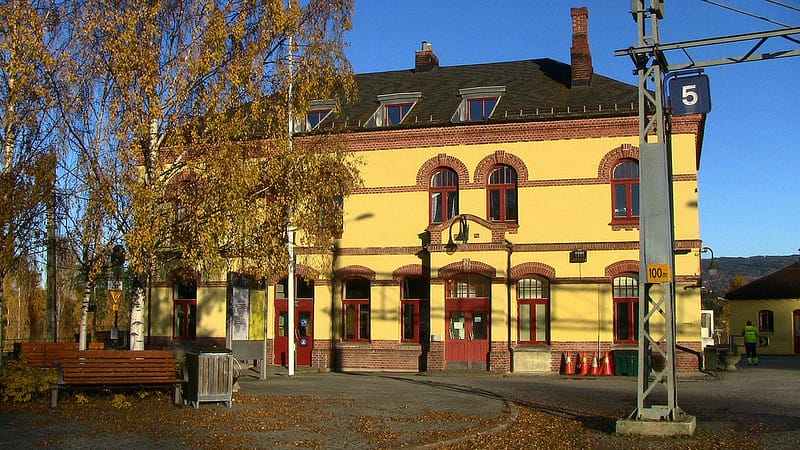With its 24,000 islands and islets, Stockholm’s vast archipelago is a marvel to behold. With a little planning, getting around is easy.
Many of the outer islands can be reached by taking the train and a ferry. The Stockholm County public transport system, SL, operates buses and commuter trains as well as ferry routes.
Take the train from Stockholm
Stockholm’s archipelago is renowned for its tranquil Baltic seas, vibrant boating culture, and charming rural villages. Quick train access from the city makes island-hopping by train a convenient and comfortable way to explore, whether you’re on a day trip or planning a longer stay.
The archipelago is also easily accessible by car, and most islands have parking lots. A number of the larger islands are connected to the mainland by road ferries. Those who are interested in driving to the archipelago should visit the official Trafikverket website for detailed information on road ferry schedules and fees.
If you’re traveling to the archipelago by train, be sure to reserve a seat with windows or an open deck so you can enjoy the views. You can purchase tickets online or at Pressbyran kiosks, SL centers, and subway stations in Stockholm. You can also buy a travel card, which is valid on buses, commuter trains, and certain ferry lines throughout the greater Stockholm area.
A public ferry service called Waxholmsbolaget offers a variety of routes from the city to many of the larger islands, including Vaxholm. You can also take a private water taxi or charter a boat for a more personalized experience. Note that the ferry service is reduced during the winter months due to icy conditions.
One of the best places to start island-hopping from Stockholm is Vaxholm, a picturesque town with a rich history. The island is a major junction for ferry traffic, and visitors can learn about the region’s storied past at the Vaxholm Fortress Museum. Afterward, they can tour the city’s pastel-colored wooden houses and duck into cafes, shops, and restaurants. If you’re looking for a hearty lunch, try the local herring.
A short ferry ride from Vaxholm takes travelers to Grinda, another popular island. This island is known for its pristine sandy beaches and woodland hiking, but it’s also home to modern pleasures like shopping, dining, and a brewery. You can also visit Bogesund Castle, a 17th-century palace constructed by Count Per Brahe. Located on the island’s northern tip, this castle is a UNESCO World Heritage Site.
Take the ferry from Nynashamn
Whether you’re seeking rural island simplicity or cosmopolitan comforts, the Stockholm archipelago is the perfect Swedish escape. Its diverse islands offer an incredible range of year round activities. From hiking trails that lead to waterfalls to scenic beaches, this Baltic paradise has something for everyone.
Visiting the islands is easy if you take advantage of Sweden’s efficient train system, which conveniently connects Nynashamn to key ports across the country. Boats and ferries are also a great way to explore the archipelago. These vessels operate on frequent routes during summer and less frequently during low season. During the summer, locals can ride for free on archipelago boats with their 30-day regional travel pass (SL).
The most popular ferry route is from Stockholm to Sandon, a small island where you’ll find clapboard houses, bobbing yachts and rocky beaches. Many cafes, restaurants and shops are based near the harbor. You can also visit the imposing Drottningholm Castle complex from here.
Another option is to head for Uto, the most populated island in the Stockholm archipelago. Here you’ll find a variety of restaurants, bakeries and other shops. You can also enjoy a walk around the island or rent a bike to see its beautiful landscapes. If you’re looking to pick up some souvenirs, this is a great place to do it; the island is dotted with artist studios that sell their handmade crafts and artwork.
To the west of Uto, you’ll find the stunning Fjaderholmen. This tiny island is a hiker’s paradise with a myriad of trails and lots of instagrammable spots to discover. It’s also a great place to pick up some unique gifts thanks to all the handmade ceramics, jewellery and other goodies on sale in the various shops.
Moovit makes it easy to plan your trip from Stockholm to the Archipelago. You can use our all-in-one transit app to help you navigate between Stockholm and the Archipelago and get the best bus or train times for your journey. Over 1.5 million users trust Moovit to get them where they need to go. Try it for yourself and download Moovit on your phone!
Take a taxi boat from Nynashamn to Vaxholm
The Stockholm archipelago makes a dreamy summer add-on to any Scandinavia itinerary. Daytime temperatures in June, July and August hover in the 70s, and the waters are warm enough for brisk dips. Plus, the luminous twilight glow of the “White Nights” lingers in the sky through most of the night.
There are plenty of ways to explore the islands—tours, bus rides and road ferries—but if you want to get away from the crowds, take a taxi boat from Nynashamn to Vaxholm. The boat departs every 30 minutes and runs all the way to the island’s main town, where you can shop for souvenirs and eat at a top-notch restaurant.
Once on the island, you can rent a bike and explore its wooded trails or moss-covered beaches. Alternatively, you can spend the day relaxing at Svartso Logi, where you can stay in a yurt or a traditional Swedish log home. You can also opt for a guided tour to see the island’s flora and fauna with a local naturalist.
You can catch a Stockholm to Vaxholm ferry from central Stockholm on SL’s commuter train line, which leaves from the city’s central station or from suburban jetties. The trip takes about an hour and costs 145 kronor (one-way) or 240 kronor round-trip. You can also use your SL period card to travel to the island.
The ferries to the larger islands—Aspero, Branno, Kopstadso, Styrso, Donso and Vrango—depart about every half-hour during peak season, with boats to the Knarrholmen and Stora Foto more often during summer. Check the SL website for schedules and tickets.
Another option is to hop aboard a Cinderella boat from Vaxholm, which offers more frequent trips to the smaller island of Moja. You’ll need to book in advance for these trips, and they are more expensive—around 210 kronor each way to Moja with Waxholmsbolaget and around 300 kronor each way with Cinderella.
Take a Cinderella boat from Vaxholm
The Stockholm archipelago can be explored by train, bus and taxi, but the best way to see it is by boat. Ferry services like Waxholmsbolaget and Cinderella run from central Stockholm to the main islands. Cinderella is a slightly nicer, newer boat operated by Stromma that costs more but has a cafe and is open all year. You can book tickets in advance on their website. It takes 50 minutes and leaves from Strandvagen pier 14.
Vaxholm is the main hub, with its cosy old town, shops and restaurants. There are also galleries and museums here showcasing the storied history of the region. You can even take a tour of the imposing Vaxholms Fastning, the island’s huge fortress.
Another main destination is Grinda, which offers options for camping or staying at the art nouveau-style island hotel (Grinda Wardshus). The island also has a public sauna and the option to hire a floating one from the hotel.
Other popular destinations include Varmdo, where the main attraction is a magnificent church and medieval castle. There’s a range of accommodation here, from hostels to luxury hotels, but be sure to book in advance.
There are plenty of activities to enjoy in the archipelago, with everything from sea kayaking and swimming to hiking and fishing. Many of the islands have beaches and rocky shores to explore, while some have their own spa hotels where you can indulge in a soothing massage.
If you want to escape the crowds, head for Gallno, where there are no kitchy souvenir shops and far more cows than people. This is the archipelago at its most authentic.
The Stockholm archipelago is at its best in winter, when the landscape is frosted over and ice floes glisten in the water. It’s possible to visit most islands, although some – such as Grinda and Svartso – are closed.



